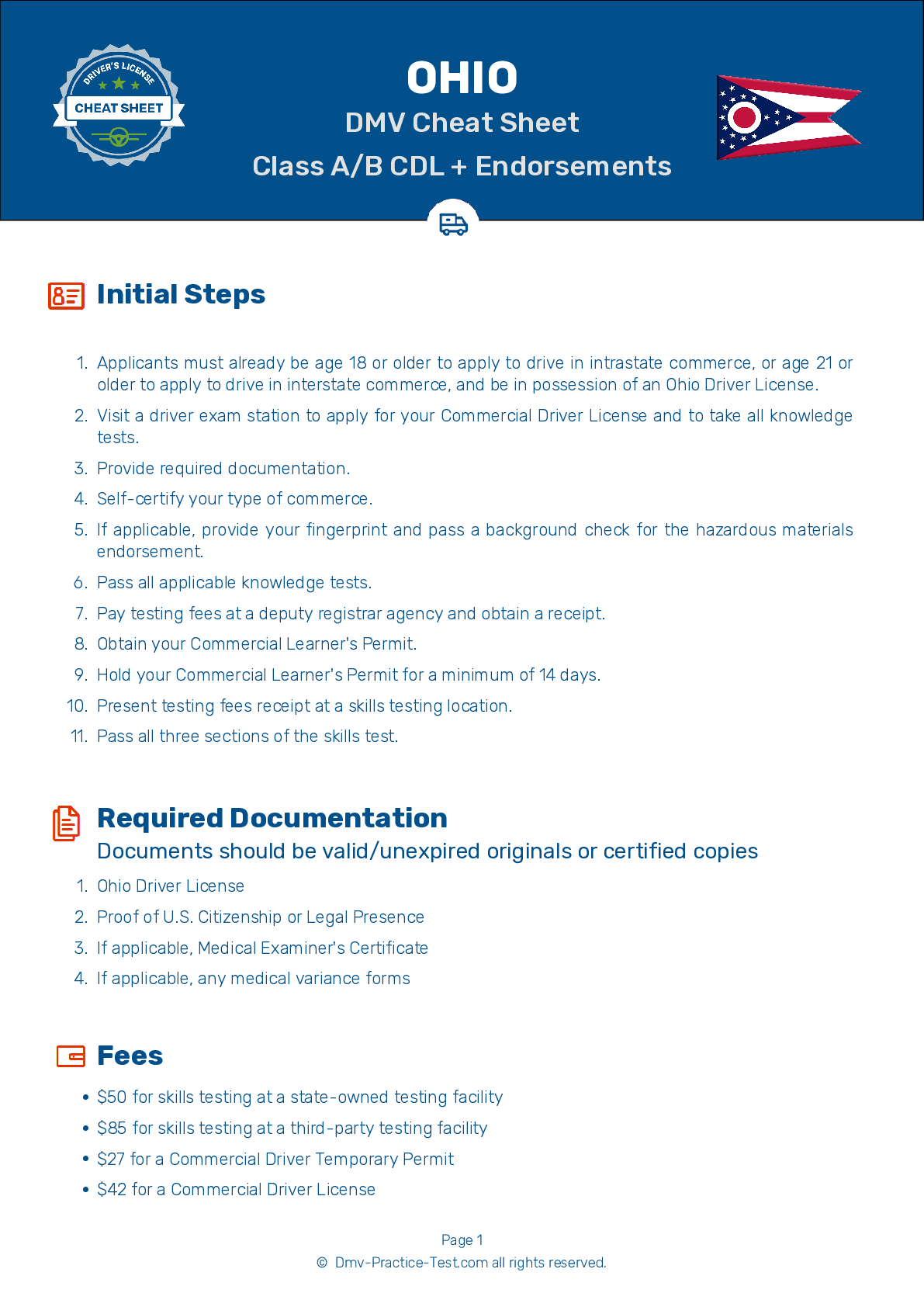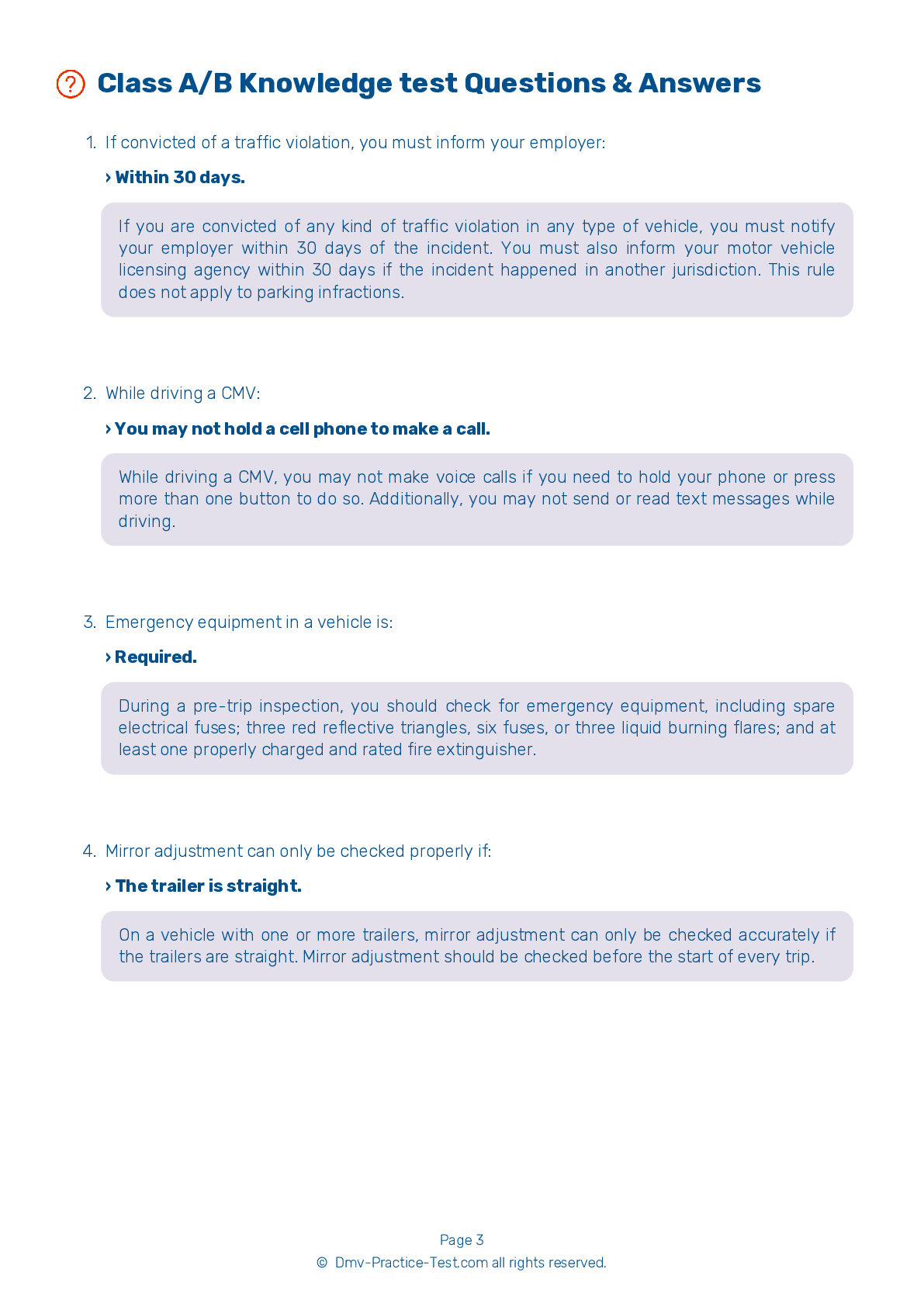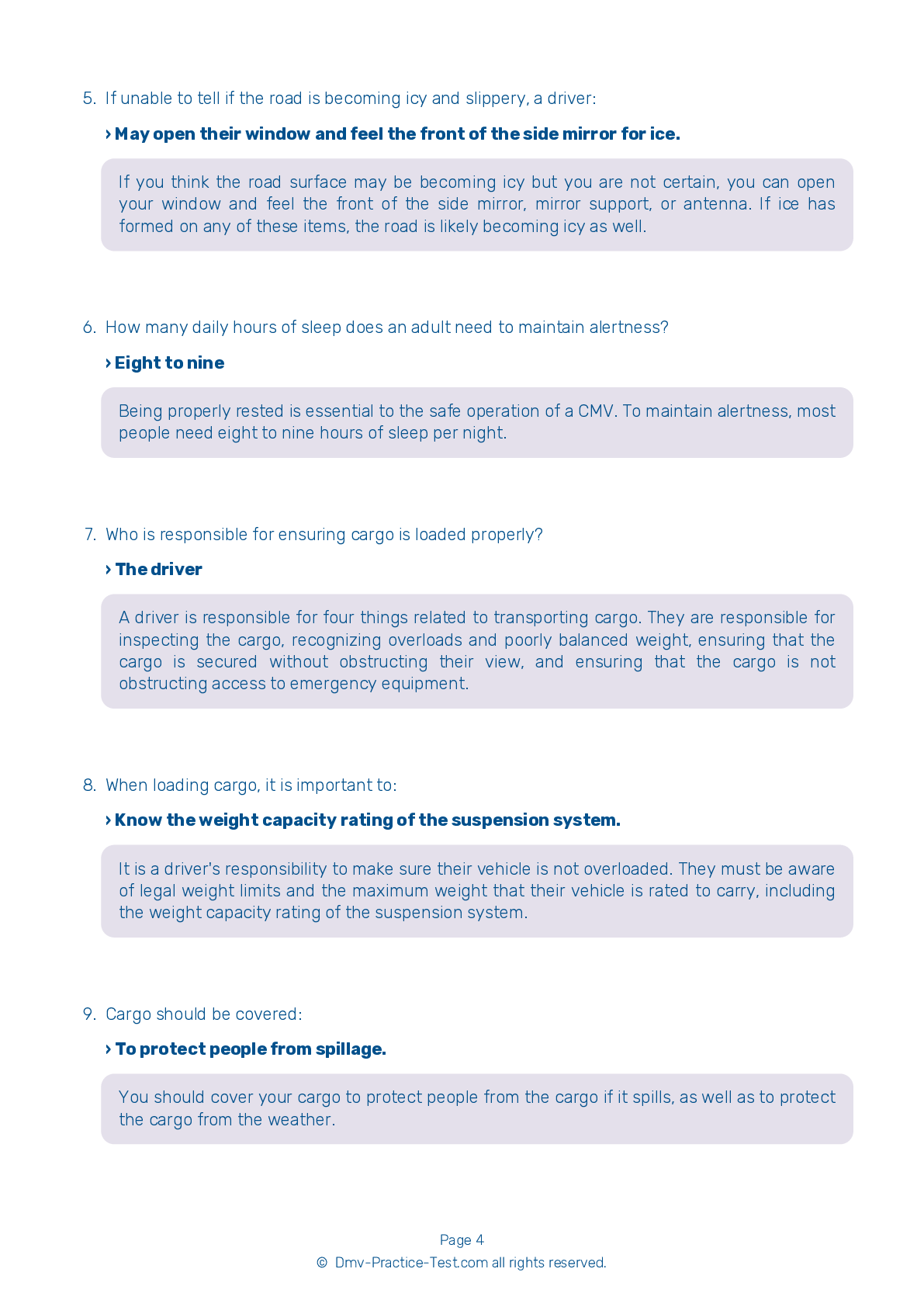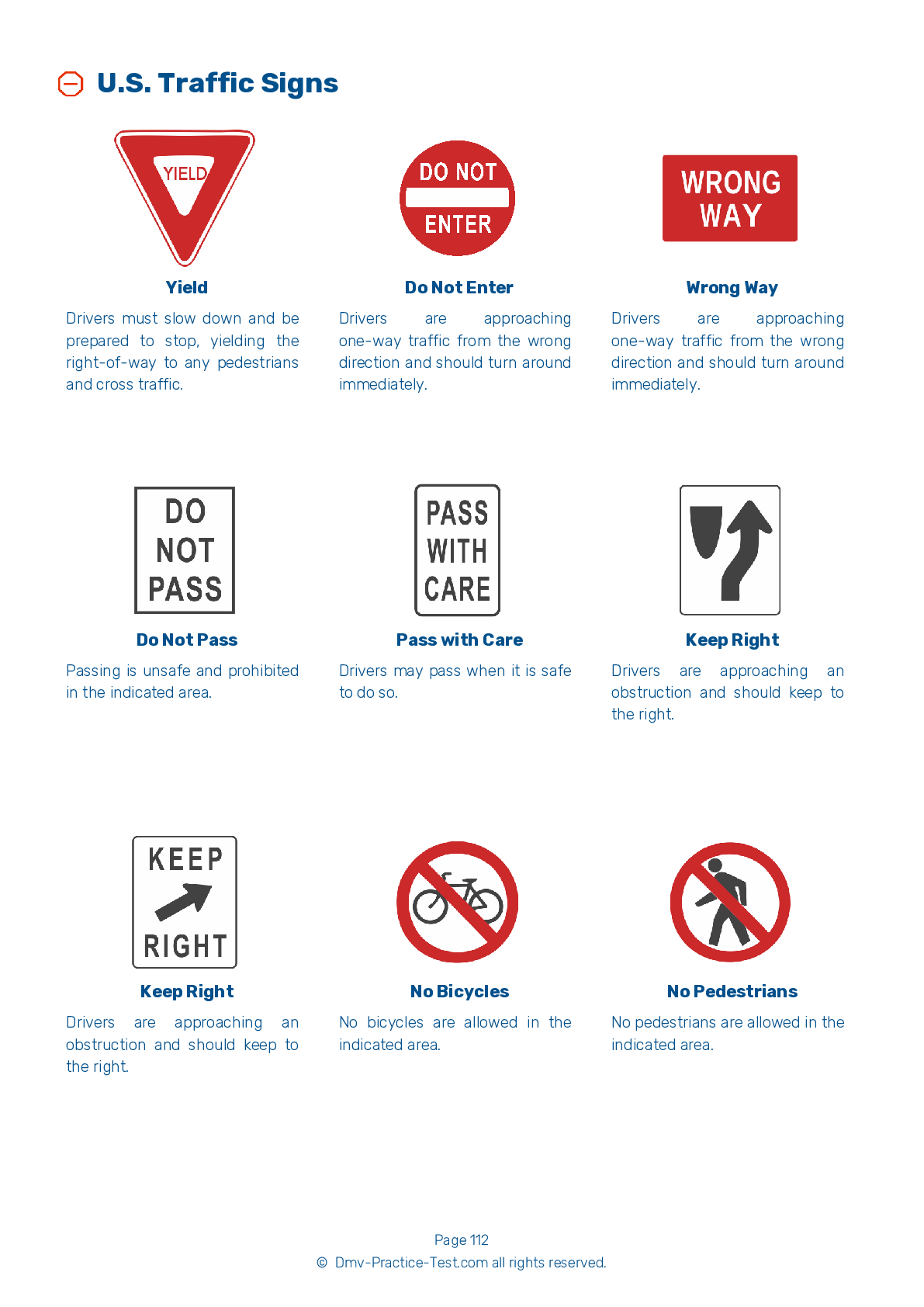Knowledge Test Class A #1
Class A Driving Test | Ohio 2025 #1 Page 3 of 7
Train for FREE online with our Ohio class A license test. The official exam test consists of several obligatory parts, with all of them checking your knowledge of different blocks of road rules. If you need to obtain a OH CDL class A permit in 2025, practice as much as possible. Free sample tests published on our website will help you check and improve your knowledge and boost your grades. Please bear in mind that CDL class A requirements may vary from state to state.
50
40
20
15 . Roads are especially slippery when it first begins to rain because:
Roads are particularly slippery when it first begins to rain. The water mixes with oil drippings on the road that have not yet washed away, creating a slippery and dangerous mixture.
16 . When accelerating on a surface with poor traction, such as a wet road, a driver should:
You should accelerate very gradually when driving under conditions that create poor traction.
17 . A danger of swerving to avoid a hazard while driving a large truck is that:
While swerving can sometimes be the safest way to handle a hazard on the roadway, doing so is not without risk. Top-heavy vehicles and tractors with multiple trailers may flip over in a swerve.
18 . When starting an engine, oil pressure should come up to a normal level:
Look at your truck's gauges when starting the engine. The oil pressure in an engine should come up to a normal level within seconds of the vehicle's engine being started.
19 . If unable to tell if the road is becoming icy and slippery, a driver:
If you think the road surface may be becoming icy but you are not certain, you can open your window and feel the front of the side mirror, mirror support, or antenna. If ice has formed on any of these items, the road is likely becoming icy as well.
20 . A low air pressure warning signal should activate:
When tank pressure falls below 5 psi.
In an air brake system, a low air pressure warning signal must come on if air pressure in the tanks falls below 60 psi. This warning signal may come in the form of a light, a buzzer, or a wig wag.
21 . What kind of brakes do most newer heavy-duty trucks use?
Most newer heavy-duty vehicles use dual air brake systems. A dual air brake system has two separate air brake systems which use a single set of brake controls.
2025 Ohio | Frequently Asked Questions
To acquire a CDL Tank endorsement in Ohio, you need to have a valid Ohio CDL. You must pass the Tank Vehicle section of the Ohio CDL permit test. The test covers knowledge on inspecting tank vehicles, driving tank vehicles, and safe driving rules. Study materials can be found in the Ohio CDL Handbook.
To obtain a CDL Tank license in Ohio, you must already possess a valid Commercial Driver's License (CDL). Then you'll need to pass the Tank Vehicle endorsement test, which covers the special driving procedures and precautions related to operating a tank vehicle. Finally, you may also need to pass a skills test in a tank vehicle, depending on your state's requirements.
While Ohio does not mandate specific training or experience to obtain a CDL Tank endorsement, it's highly recommended. You must pass the Tank Vehicle endorsement test, which requires understanding the unique operations of tank vehicles. Many applicants find training courses or experience driving these vehicles beneficial in successfully passing the test.
Yes, in Ohio, to obtain a CDL Tank endorsement, you must pass the Tank Vehicle endorsement test. This written test focuses on the operation and safety considerations specific to tank vehicles. The topics include inspecting tank vehicles, driving tank vehicles, and safe driving rules related to these types of vehicles.
The written test for the CDL Tank endorsement in Ohio covers topics such as inspecting tank vehicles, driving tank vehicles, safe driving rules, handling emergencies, and understanding the different types of tanks. It also includes questions about the special requirements for loading and unloading tank vehicles.
The CDL Tank endorsement assessment doesn't involve practical driving skills or maneuvers. Instead, it's a written test focusing on theoretical knowledge. Subjects include understanding high center of gravity, surge, inspecting tank vehicles, special driving rules and procedures, and handling emergencies specific to tank vehicles.
Drivers with a CDL Tank endorsement must adhere to all federal and state regulations for commercial drivers, including hours of service limitations. They must also follow specific rules for transporting liquids, such as weight restrictions and handling procedures. Additionally, if a driver's tank vehicle carries hazardous materials, they need a HazMat endorsement in addition to the Tank endorsement.
No, it's illegal to transport liquid or gaseous materials in a tank vehicle without a valid CDL Tank endorsement. This rule applies to commercial vehicles that have a tank with a capacity of 1,000 gallons or more. Violating this rule can result in fines, CDL disqualification, or even criminal charges depending on the severity of the violation.
The CDL Tank endorsement can be added to your existing CDL. You don't need to apply for a new license. However, you'll need to pass the Tank Vehicle written test. Once you pass, the endorsement will be added to your CDL, and you can legally operate tank vehicles. Please check with your local DMV for specific procedures and fees.
Yes, handling hazardous materials requires not only a CDL Tank endorsement but also a HazMat endorsement. This entails passing a written test and a federal background check. It's essential to understand specific regulations for transporting hazardous materials including proper loading, unloading, and emergency handling procedures to ensure safety on the road.



